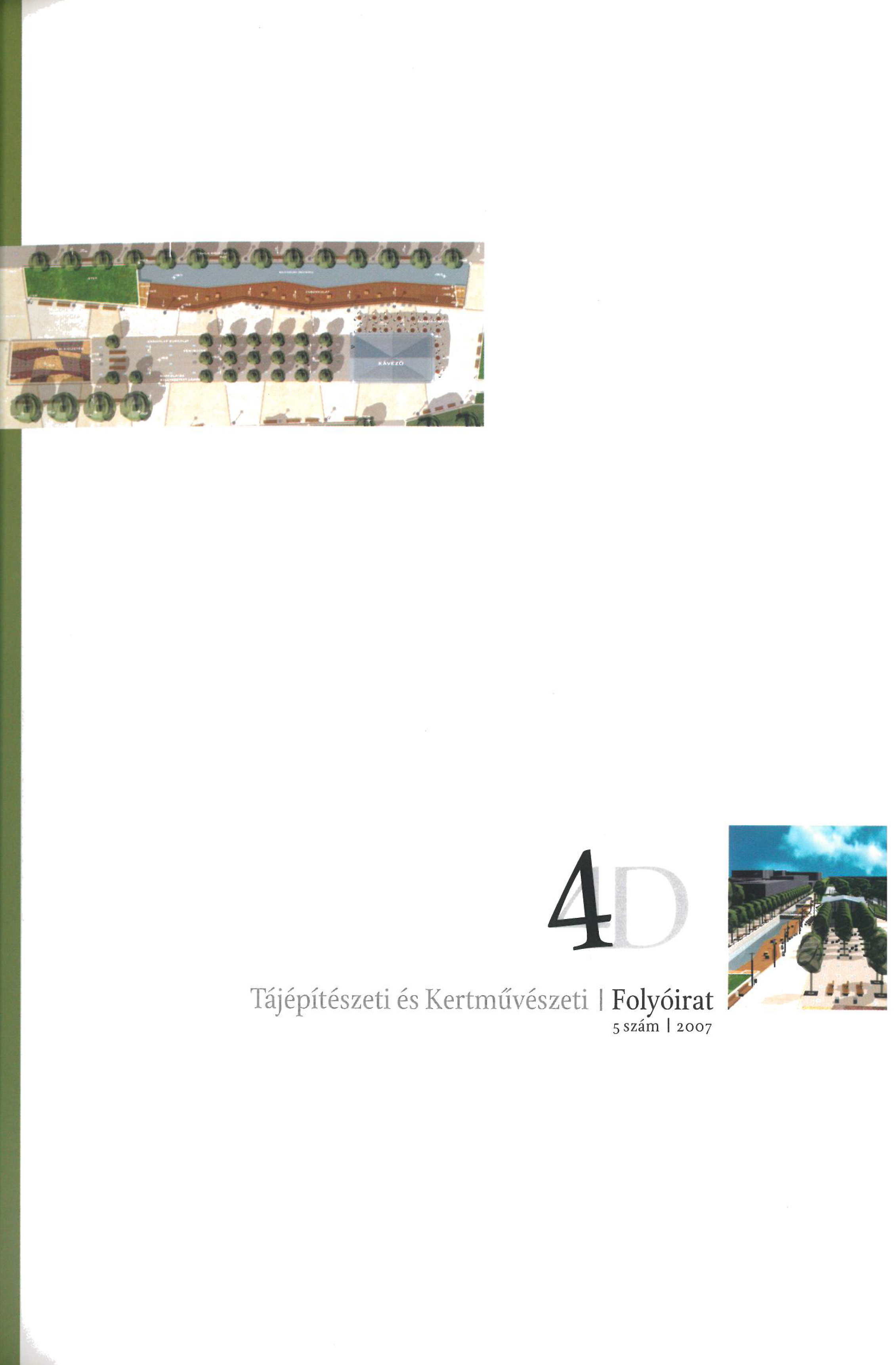“CV”: Change of Identity in the history of an urban square
Keywords:
The Square of the ‘56’s, Városliget, Rondó, Nebbien, Pageant’s Square, sculpture park, monumentAbstract
In the 23rd of October, 2006 we inaugurated a new-called old square of Budapest, the ex-Felvonulási tér (Pageant’s Square) became Ötvenhatosok tere (The Square of the ‘56’s). This antagonistic identity-change shows the stressful life of the place. In the article the history of this square has been introduced in an environmental psychological approach, how the consecutive ideologies of the 20th century changes people’s attitude to this artificial square of Budapest. 150 years ago it was a part of Városliget, the capital’s biggest public park. which slowly became the territory of labour’s weekend activity, and demonstrations. In the ’30-es a church (Regnum Marianum) was built here as the sign of national conservative identity, which led to a different piacé identity. This intensified when the church was demolished for Stalin's enornious statue, where pageantries where held on the lst of May, 4th of April, 7th of November during the communist dictatorship. In 1956, people’s wrath cut down the huge statue. On this place is now the 50th year-anniversary monument of the Revolution. All this emotional, psychological and social process looks to get into balance now.
References
Ittelson, id. Amadeo, id. Dűli A.- Ur- bán R. (1997): Az épített környezet konnotatív jelentésének vizsgálata: módszertani megfontolások, Pszichológia, (17), 2, p.154.
Dúll Andrea (1996). A helyidentitásról, Magyar Pszichológia Szemle, (36), 4-6. p.363-391.
Pogány Frigyes (1954). Terek és utcák művészete, Építésügyi Kiadó, Budapest, p.5.
Frohmann, Erwin (2000). Gestatqa litáten in Landschaft und Freiraum, Wien p.201-202.
Nebbien, Heinrich (1816). Un- garns Folk-garten dér Koeniglichen Frey-Stadt Pesth (reprint: Gerhard Ganschow, 1981, Universitát München) p. 48.
Granasztói Péter (1997) Tömegszórakozás a Városligetben - A Vurstli, Budapesti Negyed, V. évf. 2-3. szám
Dúll Andrea (1996). A helyidentitásról, Magyar Pszichológia Szemle, (36), 4-6. p.369.
„Százezer férfi szentségimádá- sa a Hősök terén", Családi Hírlap. 1938, május 5. p.3., Budapest Bibi. VI.21192.
Egyházközösségi Tudósító, Vili. Évf. 4 szám
Horváth Miklós (1946). A történeti templomépítészet Budapesten, p.31-33.
Megkezdődött a magyar katolikusok országos ünnepsége. Magyarság 1925, október 11. p.5.
Dúll Andrea (Előadás-jegyzet, 2006 - BME)
Népszava, 1949. augusztus 28. P-2.,7.
Pótó János (2003). Az emlékezés helyei -Emlékművek és Politika, Osiris Kiadó, Budapest, 2003. p. 206-209.
Interjú Hajnal György atyával, http:// www.radio.hu/index.php7cikk id=164596 - 2006. 02. 27
Thaly Tibor (1958). A 200 éves Városliget, Gondolat kiadó, Bp.
Vadas Ferenc: Szertartások tere- Hösök tere, mint színhely, Magyar Építőművészet, 1992, 83. évf. p.26- 29.
Tunyogi Gábor (2002). A totalitárius államművészet pszichológiai szempontból, szakdolgozat - http://tot- muv.freeweb.hu/ -2007. 01. 31
A Budapesti Nemzeti Színház Terv- pályázata (1965). szerk.: Dr. Reischl Antal, Műszaki Könyvk. Vállalat, Bp.
Christian Norberg-Schulz: Genius loci, http://epa.oszk.hu/0000/00005/00022/ot33-07.htm
Kernács Gabriella, http://mtv.hu/nyomtátás.php?id=46991 - 2004.március 29.
http://www.19562006.hu/kalendari- um/índex.php?id=16 - 2007. 01. 31
Downloads
Published
Issue
Section
License
Copyright (c) 2024 Eplényi Anna

This work is licensed under a Creative Commons Attribution-NonCommercial-NoDerivatives 4.0 International License.
A folyóirat Open Access (Gold). Cikkeire a Creative Commons 4.0 standard licenc alábbi típusa vonatkozik: CC-BY-NC-ND-4.0. Ennek értelmében a mű szabadon másolható, terjeszthető, bemutatható és előadható, azonban nem használható fel kereskedelmi célokra (NC), továbbá nem módosítható és nem készíthető belőle átdolgozás, származékos mű (ND). A licenc alapján a szerző vagy a jogosult által meghatározott módon fel kell tüntetni a szerző nevét és a szerzői mű címét (BY).



